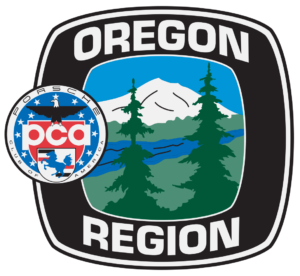Bringing your baby out of hibernation
As I’m typing this I’m staring out the window at sunshine and bluebird skies. It’s apparent spring is arriving early this year (did we even have a winter?). Many of you have already begun to take your pride and joy out of hibernation, but many of you haven’t yet. This month I wanted to share a few tips on the preferred way to get your Porsche ready for spring driving as Porsche’s are supposed to be driven you know!
#1 Depending on where you’ve been keeping the car in storage, possibly under a car cover, as you remove the car cover, make sure that furry rodents didn’t leave any deposits or small tokens of appreciation for you. If they did, this could be a bad sign; rodents love insulation, whether it be fabric-based or wiring insulation. You would then want to fully inspect your vehicle for signs of rodent nests and chewed electrical wiring. If the wiring needs attention, get it taken care of first.
If the rodents are still around the premises, whatever you do don’t leave rat poison out for them. We had a client do this once; the mouse ate the poison, then crawled into the deep recesses of her car between two body panels and perished. Mr. Mousy was so far in there we couldn’t extract him, so she had to live with a bit of stench for awhile. Ick. This is why placing mouse traps are the preferred method.
#2 If you haven’t changed your brake fluid in over a year, it’s recommend to check the moisture content. Anything over 2% moisture is too much and the fluid should be changed. Brake fluid is hygroscopic which means it absorbs moisture from the air. Moisture sitting in the brake system over the winter can lead to corrosion within the brake system. This can certainly lead to other brake issues; spongy brake pedal, poor braking performance, even a potential clog in a brake line from rust particles. Porsche, along with all auto manufacturers, recommend changing the brake fluid every 2years maximum (if you’re participating in auto-x or HPDE, that duration drops to at least every 1 year).
#3 This step may be a bit controversial as there are many different schools of thought. Once you disconnect the battery charger from your vehicle…
A. IF you had already changed the engine oil before you put your Porsche into hibernation, before you start the vehicle, take a moment to have a look around and make sure nothing looks out of the ordinary, fluid levels are correct, etc. Make sure you don’t have any major fluid leaks/puddles underneath. If no major leaks, one possible method of starting the vehicle for the first time in months is; pull the fuel pump fuse (find it’s location in the owners manual), crank the key for 30seconds or so to get oil pressure/lubrication to the furthest valvetrain components. Then reinstall the fuel pump fuse and start the vehicle.
B. If you DIDN’T change the engine oil before hibernation, you have a choice to either change it before you start the engine or to start the engine, get the oil up to temp, and then change it. Due to the contaminants and condensation now in the old engine oil, the first school of thought is that changing the oil before starting the engine doesn’t allow the contaminants to cycle through the engine as much. The second school of thought is that possibly more contaminants are leeched out of the oil once the oil gets up to proper temperature and then is drained. The decision is up to you.
#4 Once the engine is running, make sure all of your lights and signals are functioning correctly.
#5 On your first spring drive, take it easy at first, ensuring the brakes are functioning, shifter is shifting smooth, etc. Make sure to get the engine oil (and coolant if you have it) up to normal operating temps. Go out and really drive your machine for at least 30 minutes or more, letting the wind blow through your hair (if you’re lucky to have any left, unlike me). One of the worst things you can do during or after hibernation is simply start the engine up and let it idle in your garage, or drive the car only around the block. This will not allow fluids to get up to proper temperature and burn off those contaminants.
#6 Most of all, remember to wear a smile on your face when driving your P-car; they’re too fun to drive otherwise!
Jeremy Williams is the Oregon PCA Technical editor. He co-owns Matrix Integrated Inc. (Matrix Integrated Inc.) with his brother Justin. Jeremy can be reached at [email protected]




